A
fortnight ago, I had the pleasure of attending the 7th Canadian Space
Exploration Worksop (CSEW). The CSEW was
a two day workshop hosted by the Canadian Space Agency in Montreal. The purpose of this meeting is for scientists
involved in Canadian space and planetary science to convene and discuss what
science objectives should be prioritized over the next decade. The Canadian Space Agency then takes these
priorities into strong consideration when determining funding allocations going
forward. The stronger a grant proposal
is inline with these objectives, the more likely it is to be selected. The last meeting of this nature was seven
years ago in 2009. You can read theobjectives outlined at the 2009 6th CSEW here. This meeting is therefore vital, not only for networking and becoming
up-to-date with recent research in space science, but also in guiding decisions
that will affect our future career paths as planetary scientists working in
Canada.
 |
| CSEW 2016 was held in the Marriott hotel. The Planetary Exploration topical sessions were held on the 36th floor, with this lovely view. |
Not only research scientists were present. Many of attendees comprised doctors, engineers, and representatives from industry and governmental organizations.
Attendees
divided themselves into nine topical teams based on their interests in
Planetary Exploration, Space Astronomy, or Space Health and Life
Sciences:
Planetary Exploration
Planetary Exploration
- Astrobiology
- Planetary Atmospheres
- Planetary Geology, Geophysics & Prospecting
- Planetary Space
Environment
Space
Astronomy
- Cosmology, Dark Energy, and Cosmic Microwave Background
- Origins and Evolution of Galaxies, Stars and Planets
- High Energy Astrophysics (HEA)
Space
Health and Life Sciences
- Multidisciplinary Approach to Health Risk Mitigation in Space
- Space Radiation Risk to Humans: Identification, Characterization & Mitigation
This
year's Canadian Space Exploration Workshop had a special focus on the Space
Health and Life Sciences topical teams, but each of the nine disciplines
updated their science priorities.
It should
come as no surprise that I attended the 3rd topical team, on Planetary Geology,
Geophysics & Prospecting. It is
worth noting that attendees were not restricted to any one section. Many people bounced amongst the geology,
astrobiology, and atmospheres rooms.
The
Planetary Geology, Geophysics & Prospecting topical team was led by
Western's own Dr. Gordon Osinski. [twitter link]. In fact, the University of Western Ontario
and the Centre for Planetary Science and Exploration had a strong presence at
the meeting, with myself, Dr. Livio Tornabene, Patrick Hill, Etienne Godin,
alumni Haley Sapers and a student from the department of Physics and Astronomy
present. Myself and Patrick filled the
documentarian roles at Dr. Osinski's sessions, keeping notes following our
changes in science priorities and the justifications for our decisions. You may notice that the term
"prospecting" is in the name of this topical session. Indeed, Asteroid Mining has been newly listed
amongst Canadian Space Science Priorities!
The future is coming.
Our
discussions were quite intensive! We
began the session with 18 potential objectives drafted. Our target was 5-6, so this may have been
overboard! Amongst these objectives were
planet-specific priorities, like determining if there is active volcanism on
Venus, and exploring geological and geochronologic record preserved in
Mercurian crust. This approach was new,
as neither Venus nor Mercury, received any specific priorities in the 2009
CSEW. However, this approach did not
last. We soon, somehow, cut ourselves
down to only three objectives, which were far too broad in focus! Finally, an equilibrium was established, and
we are pleased to have shared six ideas for new objectives for submission.
These
objectives are drafts, open to further input, and will be subject to much
refinement, but have been proposed to be along the following lines:
Objective 1:
Document the geological record and the processes that have shaped the
surfaces of the terrestrial planets and their moons, asteroids (e.g. impacts
and volcanism).
Objective 2: Determine the interior structure and properties of the terrestrial planets and their moons, and asteroids.
Objective 3: Determine the resource potential of the Moon, Mars, and asteroids
Objective 4: Surface modification processes on airless bodies (space weathering, regolith processes, micrometeroites, solar wind)
Objective 2: Determine the interior structure and properties of the terrestrial planets and their moons, and asteroids.
Objective 3: Determine the resource potential of the Moon, Mars, and asteroids
Objective 4: Surface modification processes on airless bodies (space weathering, regolith processes, micrometeroites, solar wind)
Objective 5:
Understand the origin and distribution of volatiles (e.g. water ice) on
the terrestrial planets and their moons, asteroids, and comets)
Objective 6:
Impact threat and hazards
One
of the emphases explored by Objective 1 is the role of planetary analogue
studies. Analogue studies involve using
rocks or climate systems on Earth to better understand similar features on
other planetary bodies, and are something Canada excels at. Scientists from around the world come to
Canada to use our country's diverse range of climates, rock types, tectonic
systems, and environments. It has been
put forward for CSA to instate a small grants program for terrestrial field
analogue studies, and this was met with a positive response.
A second priority listed is for Canada to contribute a synthetic aperture radar contribution to an upcoming Mars orbiter mission. Radar systems, like my favourite RADARSAT-2 that I use for my thesis, are also something Canada excels at. The Canadian Space Agency works in conjunction Vancouver based MacDonald, Dettwiler and Associates Ltd (MDA corporation) to develop these orbiters. Synthetic aperture radar is missing from the Mars orbital datasets, and a Canadian contribution would be most welcome to fill this niche. Not only is radar is excellent for characterizing the roughness of surfaces, but polarimetric radar is also extremely useful in identifying water ice -something that has been a target of multiple Mars exploration missions, like the Phoenix lander.
A second priority listed is for Canada to contribute a synthetic aperture radar contribution to an upcoming Mars orbiter mission. Radar systems, like my favourite RADARSAT-2 that I use for my thesis, are also something Canada excels at. The Canadian Space Agency works in conjunction Vancouver based MacDonald, Dettwiler and Associates Ltd (MDA corporation) to develop these orbiters. Synthetic aperture radar is missing from the Mars orbital datasets, and a Canadian contribution would be most welcome to fill this niche. Not only is radar is excellent for characterizing the roughness of surfaces, but polarimetric radar is also extremely useful in identifying water ice -something that has been a target of multiple Mars exploration missions, like the Phoenix lander.
All in all, I think
the meeting was quite successful! And not just because I'm biased towards radar and field analogue studies. 😊
Fortunately
if you were unable to attend this year, you may not need to wait another seven
years for the next workshop. One of the
unanimous sentiments shared by scientists at the meeting was that we felt like
there was too much to discuss and catch up on, in such a short time. The Canadian Space Agency hopes to run CSEWs
at more regular intervals going forward, and I hope to see you there!

















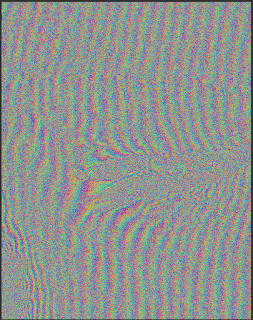
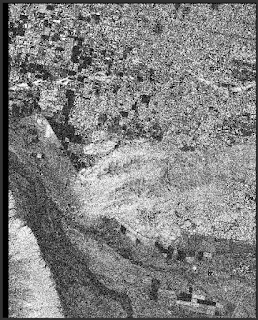
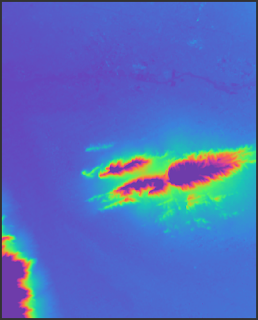


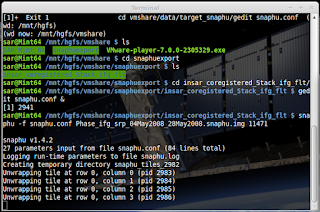
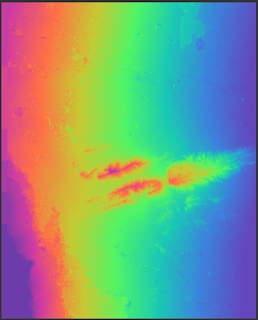
![By Connormah (Based off) [CC BY-SA 3.0 (http://creativecommons.org/licenses/by-sa/3.0)], via Wikimedia Commons](https://blogger.googleusercontent.com/img/b/R29vZ2xl/AVvXsEgjdRzzycnrFJMIBgrxZ59JPZFYCIG9B62ZQeeeH28j2GrE0w0QOt519PBvx6Ya53BxxCI4icCcKm6euXtjlduvPURXkQwHpdW-EWx1BQe6TerTyHiectm5er1xjZQliVaKeTEyC-dS634/s320/706px-Axel_Heiberg_Island%252C_Canada.svg.png)










